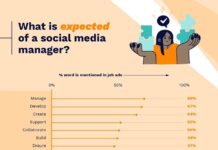Many people hate change–but some see it as an opportunity (Smart Brief on Social Media). What we wanted to know is: what do the slew of changes announced by Facebook mean for brands?
The short answer: nobody knows for sure. Yet. But there are some clues.
First, a quick recap of the changes that have been introduce and/or announced for the platform that now accounts for 16% of all the time that Americans spend online (WSJ MarketBeat):
- You can now allow people to subscribe to your updates (IT World), and you can specify which updates you want to share with what groups of people.
- The Ticker now lets you see every single click, like, listen, comment or check in posted by one of your friends, someone you’re subscribed to, and pages you’ve fanned, in realtime (AllFacebook), including Sponsored Stories. Lots of people hate the Ticker; here’s how to turn it off (CNet).
- Feeling long-winded? Posts, previously limited to 500 characters, can now be as long as 5,000 characters (Inside Facebook).
- Your newsfeed can now be filtered based on your friends lists, and users can provide feedback on how they want posts (“stories”) from individual users displayed in their “Top Posts.”
- The Timeline is the new way for users to organize their profiles. It lets you showcase key moments of your history on Facebook (and before), and it can incorporate a lot of different apps.
- It’s beautiful. I haven’t turned it on for my profile yet, but many of my friends have, and almost all of them use that adjective to describe their new Timeline.
- It is designed to integrate a large package of wide-ranging news, video and music partnerships (All Things Digital), and a way to share content activity inside and outside of Facebook, sources said. For example, if you use Spotify, your friends and subscribers will know what you’re listening to, and a Facebook login is now required to use Spotify (Digital Trends).
- Most controversially, much of this sharing now happens automatically. Rather than asking users to click a button to Like something, Facebook will change the technical framework for apps within Facebook so that rather than requiring you to click to share, comment or express sentiment, the app automatically broadcasts a status update for you (Brian Solis). For some people, this is very scary stuff (Dave Winer).
So what does it all mean for brands? Some analysts think that these changes will give brands even more opportunities to enter the digital storyline of consumers’ lives in a meaningful and genuine way (360i). Brand updates that were previously never seen in the old timeline may now be more likely to appear in the ticker, since every story gets posted and scrolls by. (ClickZ) Facebook itself is steering marketers toward Sponsored Stories (MediaPost).
On the other hand, while the new features could create more opportunity for users to interact with brands and products, an increased volume and velocity of updates on Facebook could also make it harder for brands to break through the clutter to reach consumers (MediaPost). In fact, the new Timeline is so beautiful and all-consuming, sharing every detail of a user’s digital life, that it may be hard for brands to compete for attention (Search Engine Land).
The changes will probably decrease the value of a Like, and increase the importance of getting users to engage with your brand in other ways. “Before on Facebook it was about getting people to ‘Like’ the brand,” he says. “Now, it’s about getting people to take social actions enabled by that brand,” speculates David Berkowitz in Mashable.
Watch for brands to build a new breed of Facebook apps based on the updated Open Graph platform. They now have the ability to go beyond just “liking” something to telling friends they are “reading,” “watching,’ or “listening to” some type of content. Brands will be able to create custom buttons within apps, such as “cooking,” “trying on,” “drinking,” or any other relevant verb. This creates the opportunity for brands to create apps that feed a consistent stream of branded social actions (AdAge), and will likely lead to even more jobs being created by the already mighty Facebook app economy (MediaPost).
So what about brand pages? No one really knows as of yet, but one Facebook rep told Mashable that they “hope to make Pages more consistent with the new Timeline in the future,” which means that won’t be true with this set of new feature releases. If you’re with the hate-the-changes crowd, or just don’t want Facebook to have that much control over all your brand story? Google+ brand pages are coming (AdAge).
One immediate beneficiary of the Subscribe and Timeline features is the “brandividual” –people who have a professional interest in building a public personality that supports but is independent of the brand with which they’re associated. Like journalists (Nieman Journalism Lab).
Welcome to the era of privacy awareness. Expect your customers to get more savvy about managing their privacy–they have to (Nik Cubrilovic). Some brands are already responding to the user backlash by stripping out the sharing buttons that track user activity on their pages (Media UK).
There’s time to let the dust settle and learn more about how your customers adapt to these changes and start using the new features. As always, don’t be afraid to play with them and experiment so you can develop a level of comfort with how things work. The great thing about business on the social and realtime web is that, even if it feels like it’s hard to keep up, you’ll never be behind for very long–there are many more changes yet to come so we’re all newbies together.
So what do you think these changes will mean for brands? How quickly will we see brands jump in and experiment?


